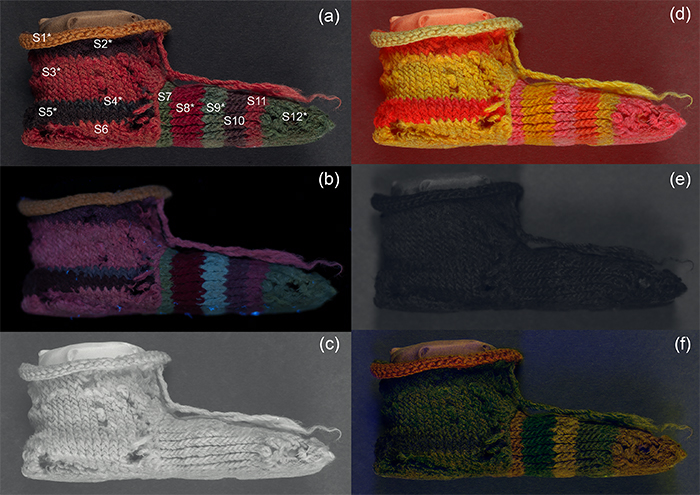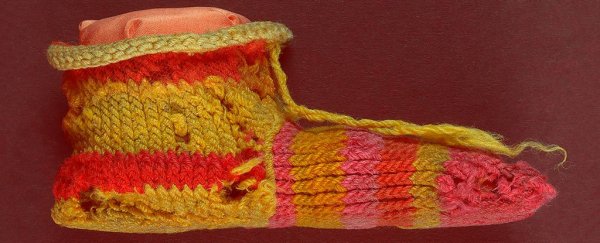With the modern textile industry at our fingertips, it's trivial to have socks with all kinds of patterns - including the ever-popular stripes. But even Ancient Egyptians had a love for the stripey sock, and now we finally know how they achieved their vivid dye colours.
Scientists from the British Museum have applied a non-invasive multispectral imaging technique to analyse the dyes used in a truly ancient sock, without having to snip off a sample.
With this approach, the team figured out which natural dyes were used to produce each colour in a child's striped wool and linen sock dating back to Ancient Egypt between 300 to 400 CE. The colours came from traditional dye-producing plants - madder for red, woad for blue, and weld for yellow.
But the imaging technique went even further, also distinguishing between the techniques used to mix those colours, including spinning together fibres that have been dyed different colours, and multiple dye baths on the same yarns.
The sock, found in a midden in the Roman city of Antinopolis in Egypt, has been in the British Museum's collection since 1914, and is described as worked in a single-needle looping technique that predates knitting and crochet called 'nålbinding', in "6 or 7 colours of wool yarn."
"It was exciting to find that the different coloured stripes found on the child's sock were created using a combination of just three natural dyes," museum scientist Joanne Dyer told The Guardian.
Using a modified Canon 40D camera, the team were able to image the sock in a range of wavelengths, including visible light, infrared, and ultraviolet. They then turned to digital microscopy to examine individual fibres for a more detailed view.
 (Dyer et al, PLOS One, 2018)"Previously, you would have to take a small piece of the material, from different areas. And this sock is from 300 CE. It's tiny, it's fragile, and you would have to physically destroy part of this object," Dyer explained.
(Dyer et al, PLOS One, 2018)"Previously, you would have to take a small piece of the material, from different areas. And this sock is from 300 CE. It's tiny, it's fragile, and you would have to physically destroy part of this object," Dyer explained.
Precise dating using radiocarbon techniques still requires a sample to be taken from the textile, but using non-invasive imaging could replace previous dye analysis techniques that also required the removal of a sample.
This could allow researchers to study in greater detail textiles that are considered too fragile for these traditional analysis methods, as well as determining which textiles are safe for museum display, since dyes are often sensitive to light.
And the examination of a greater number of textiles will help historians study the relationships between those textiles and their time periods, according to Dyer.
"Late antiquity is a very long period, from 200 AD to 800 AD," she said.
"Within that period in Egypt there are lots of thing happening. There is the Arab conquest of Egypt, the Romans leave Egypt. These events affect the economy, trade, access to materials, which is all reflected in the technical makeup of what people were wearing and how they were making these objects."
The research has been published in PLOS One.
